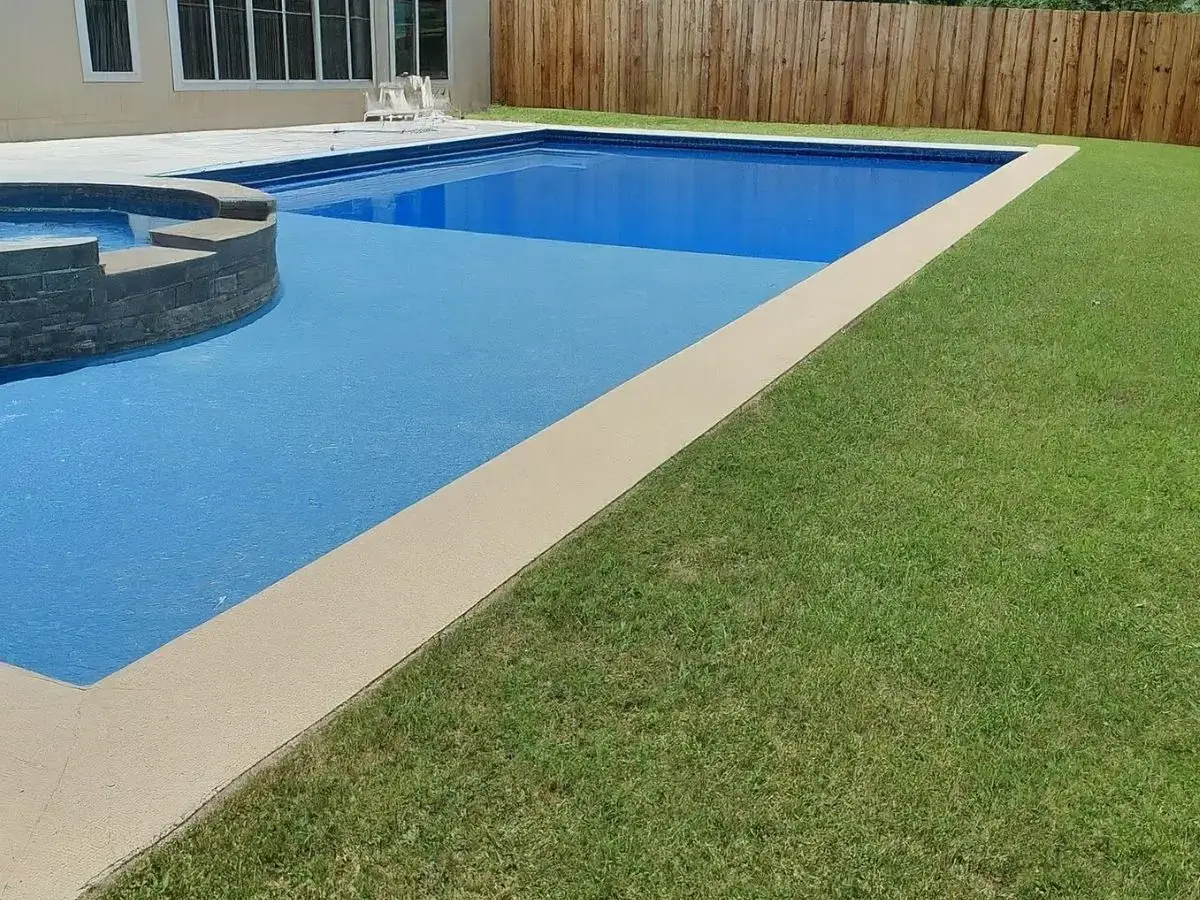If you’re considering resurfacing your residential swimming pool, choosing the right products is critical to achieving your desired appearance, performance, and longevity. With the wide range of pool resurfacing options on the market, deciding what materials are best for your project can get overwhelming. Follow this in-depth guide to make the process easier.
Carefully Assess Your Pool’s Current Condition
The first step is to examine the existing state of your pool thoroughly. Look for cracks, leaks, or structural issues requiring repairs before resurfacing. Check the deck and coping for problem areas as well. Damaged concrete or loose tiles around the pool’s perimeter should be addressed.
Evaluate the type of existing pool surface you have and its overall condition. Plaster finishes, fiberglass, pebble, and other surfaces have different needs for resurfacing prep work. Identify any low spots, hollow sounds, or delaminated areas on your current surface. Any major underlying problems need to be fixed first before applying new finishes.
Proper cleaning is also key. Etch or abrade the old surface to remove chalkiness and algae and prepare it for better adhesion of new materials. Thorough prep work leads to better results.
Consider the Aesthetics You Want
Today’s pool resurfacing products offer endless colors, textures, and visual appeal options. Think about the overall look you want to achieve. Do you want a natural pebble or quartz finish to mimic the beauty of real stones? Do you prefer a smooth plaster surface for a classic appearance? Interested in the visual drama of dazzling glass tile accents?
Maybe you’d like the realistic texture of acrylic to simulate a mountain pond or Caribbean lagoon. Many companies offer custom 3D mold designs to create stunning, lifelike scenes. The choices available now go far beyond the basic pool finishes of the past. Determine the style and atmosphere you want, from subtle earth tones to vibrant tropical hues.
Research Options for Maximum Durability
While aesthetics may drive your initial pool resurfacing decision, durability is crucial for long-lasting satisfaction. Plaster and concrete surfaces usually last 7-15 years with proper care. Aggregate and quartz blends, tile, and fiberglass can last 15-20 years. Some polymer coatings claim even longer lifespans of 20-30 years.
Look at warranties when comparing durability. Higher-performing finishes often provide extended protection. And remember, not all plaster is equal. Enhancing it with polymers and aggregates will improve strength and longevity. Also, consider your local conditions. Some materials resist humid climates and freeze-thaw fluctuations better than others. Do your homework to find the optimal balance of visual appeal and enduring performance.

Understand Installation Methods
Proper application is just as important as the products themselves regarding resurfacing results. Many pool finishes require specialized tools, techniques, and skills. For example, plaster needs to be meticulously troweled and smoothed by experienced professionals. Pebble finishes involve broadcasting aggregates evenly throughout wet plaster.
Tile requires careful prep work, precise cutting, proper spacing, and expert grouting and sealing to prevent leaks and cracks. Multiple-layer acrylic systems demand proper curing times between coats. Know the type of finish you want so it gets installed correctly. Hiring qualified contractors experienced with the material is advised.
Request Quotes from Contractors
Prices for pool resurfacing can vary widely depending on the products used and the labor involved. Plaster is the most budget-friendly option. Pebble and quartz finishes cost moderately more. Tile, glass mosaics, and acrylic coatings fall on the higher end of the spectrum.
Be sure to get quotes from several reputable contractors before deciding on finishes. Their bids should specify material and labor expenses so you can accurately compare costs. Also, find out if any special site preparation work, permitting, equipment rentals, or other fees may be required. Understanding total project costs is vital when selecting products.
Ask About Maintenance Requirements
While a beautifully resurfaced pool provides immediate enjoyment, keeping it looking pristine for years requires proper maintenance. Certain finishes have higher care needs than others. For example, plaster surfaces are prone to etching from chemicals and stain more easily than pebble or quartz materials.
Tile grout lines need periodic resealing. Improperly balanced water can ruin acrylic coatings over time. When discussing resurfacing options with contractors, ask about regular upkeep needs, so your investment retains its luster. Taking proper care of your finish ensures maximum longevity.
Frequently Asked Questions on Pool Resurfacing Products
-
What is the best pool resurfacing material overall?
There is no definitive “best” material overall. The right choice depends on your budget, climate, desired appearance, and other factors unique to your pool. Generally, plaster or quartz aggregate finishes provide a good combination of aesthetics, durability, and affordability.
-
How long does pool resurfacing last on average?
Plaster lasts 7-15 years, pebble/quartz aggregate 15-20 years, and materials like tile and fiberglass can last 20+ years with proper maintenance. Polymer-enriched coatings may last even longer – 20-30 years. Proper installation and care are key.
-
Should I hire a contractor for pool resurfacing?
Professional installation is strongly recommended for any pool resurfacing project to ensure correct preparation, application, and finishing. Many materials require specialized skills, tools, and techniques best handled by qualified local contractors.
Get Ready for a Beautiful New Pool Surface
Resurfacing can transform a worn, faded pool into a stunning backyard showpiece. For exceptional results tailored to your needs and budget, contact the experts at AquaGuard 5000. Our team is here to help you select optimal materials. Call us today!







